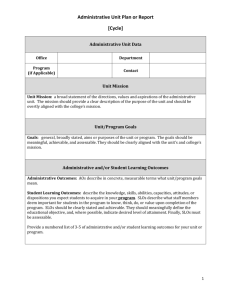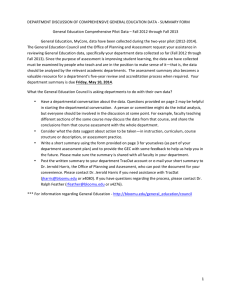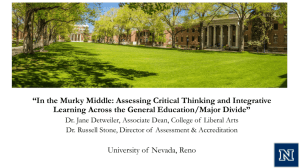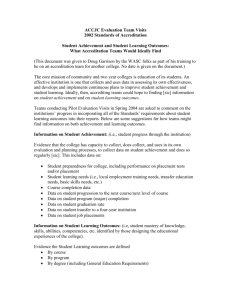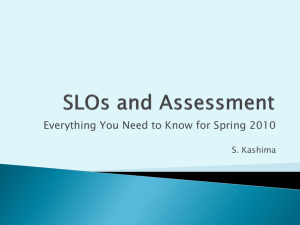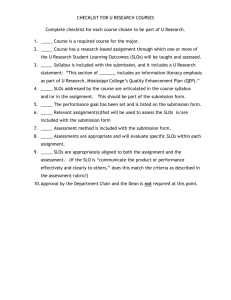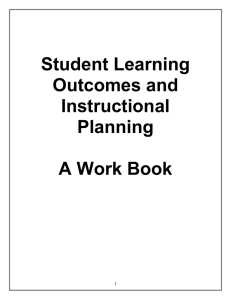Moving Forward: Taking Charge of SLO Assessment Marcy Alancraig English Professor and Learning
advertisement
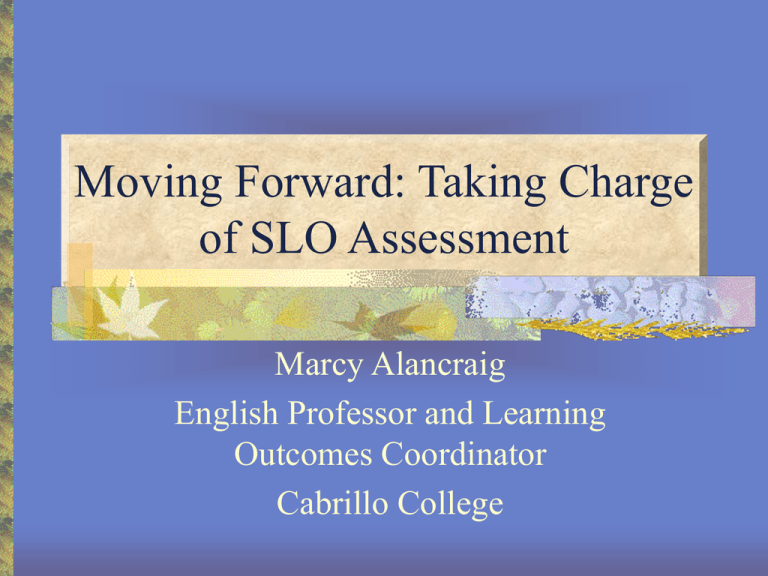
Moving Forward: Taking Charge of SLO Assessment Marcy Alancraig English Professor and Learning Outcomes Coordinator Cabrillo College To Deal with Student Learning Outcomes You Need: • Sense of Play • Willingness to Experiment • Healthy Dose of Skepticism • Ability to translate assessment theory and jargon into the language of your college Why Assess SLOs? • It’s what you’ve been doing informally all along • It’s good teaching practice • It’s better for students • It can make your teaching life better New Accreditation Standards: The 5 Stages of Faculty Grief • • • • • Denial Anger Bargaining Depression Acceptance Quickie Review: Standards Require • SLOs for all courses • SLOs for all programs • SLOs for all certificates and degrees More Review • All SLOs must be assessed regularly • Assessment results must be discussed (dialogue is key!) The Assessment Loop Gather Evidence Interpret Evidence Mission/Purposes Educational Objectives How well do we achieve our educational Enhance teaching/ objectives? learning; inform institutional decisionmaking, planning, budgeting – Peggy Maki, AAHE Closing the Assessment Loop • Assessment must feed back into processes to improve teaching and learning • In the classroom • In the department • Across the entire campus • Activity should be useful and easy Key Point! • Each school must design the assessment process to fit that school’s culture Key Decisions • How much time do you want to spend? • Will the assessment be something extra you require of students beyond class work? • Will the assessment be something extra you expect of faculty? More Key Decisions • Do you want the same method used to assess SLOs across the entire campus? • Who will analyze the results? • How will you close the feedback loop? A suggestion: • Use the KISS method • Keep it simple, sweetheart! Rubrics Rock! A Simple Method of assessment for all SLOs So What’s a Rubric? • A very detailed grading scale for one assignment • A descriptor of each level of achievement Why Rubrics Rock • Great for students • Doesn’t impinge on your academic freedom • May make your teaching life easier • Caveat: Doesn’t work for multiple choice exams Bonus Plus • Can be easy assessment method for SLOs But only if the loop is closed And the results are discussed How do Rubrics Work? • Rows: Criteria of rating • Columns: Levels of mastery • Beginner • Developed • Accomplished • Cells: Describes work at each level of mastery • Build from strengths and weaknesses teachers see in student work over the years Activity • Create a Chocolate Chip Cookie rubric Sample Rubrics • Grid • Narrative with points • Combined with Grading Sheet Advice: Rubrics are • As individual as instructor and assignment • Works in progress, always changing • Something students should see in advance? Activity • Choose one particular major assignment • Use workbook to create a rubric for it • Share with folks at your table Where do you go from Here? • Next Steps
